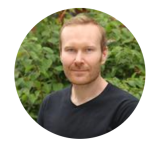
(Guest blogger: Lead Teacher, Patrik Friggebo)
New school year and our physics project at VRG Odenplan is starting its second and last phase, exciting!
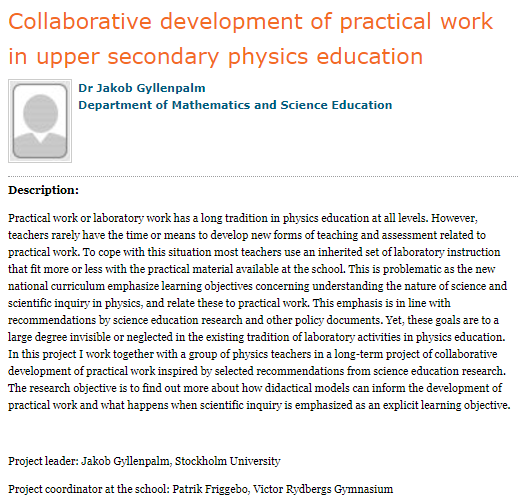
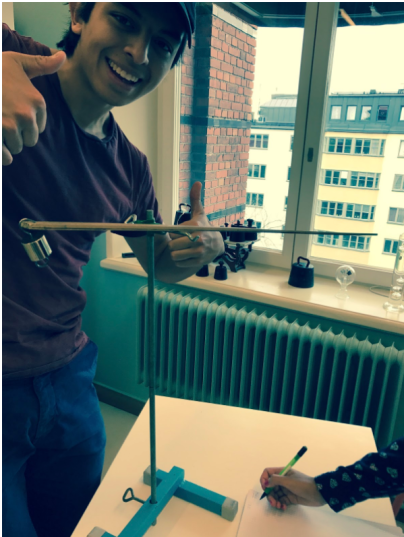 This year, we will focus on Physics 2. For those who do not know, I can explain that the project, which is a collaboration between the physics teachers at VRG Odenplan and Jakob Gyllenpalm, from the Department of Mathematics and Science Education at Stockholm University, focuses on developing lab activities that allow students to learn about the characteristics and the ways of working in Physics. There is research that suggests this is a better way of working rather than using lab work primarily to learn about the concepts of Physics. Additional evidence can be found here>>
This year, we will focus on Physics 2. For those who do not know, I can explain that the project, which is a collaboration between the physics teachers at VRG Odenplan and Jakob Gyllenpalm, from the Department of Mathematics and Science Education at Stockholm University, focuses on developing lab activities that allow students to learn about the characteristics and the ways of working in Physics. There is research that suggests this is a better way of working rather than using lab work primarily to learn about the concepts of Physics. Additional evidence can be found here>>
Last year, we developed activities related to the course Physics 1a, and today we have a series of labs, which we think provide the students with good opportunities to learn about the characteristics and nature of Physics in this course. We have to be careful not to draw conclusions about educational benefits too early, yet based on a limited number of students’ feedback, it felt that Physics 1a students were more skilled in the lab methods than they usually were.
This year, it is time for us to take on Physics 2 in that same spirit. A key feature will be to develop lab activities that, in combination with theory, teach students a method of quantitative error analysis. This will, in addition to giving students the opportunity to reflect on the concepts of sources of error and accuracy at a completely different level than before, give students the tools to compare different methods and discuss how relevant and reliable their results and conclusions are. Developing students’ understanding of hypothesis is another challenge we intend to meet this academic year.
If you think this sounds interesting and would like to know more, you are welcome to contact me. I would like to tell you more about our work and the activities we have developed.
Nytt läsår och fysikprojektet vid VRG Odenplan går in i sin andra och sista fas, spännande! Detta läsår fokuserar vi på kursen Fysik 2.
För den som inte vet kan jag berätta att projektet, som är ett samarbete mellan fysiklärarna på VRGO (Elena, Fredrik, Mats, Tobias, Ulf, Åsa samt undertecknad) och Jakob Gyllenpalm, lektor i naturvetenskapsdidaktik vid MND*, fokuserar på att utveckla laborativa aktiviteter som ger elever möjligheter att lära sig om fysikens karaktär och arbetssätt. Det finns vetenskapliga rön som föreslår att detta kan vara en bra idé snarare än att använda laborationer främst för att elever ska lära sig om fysikens stoff (den intresserade kan läsa om detta med mera här och här). Förra läsåret utvecklade vi aktiviteter tillhörande kursen Fysik 1a och idag står vi därmed med en serie laborationer som vi tycker ger eleverna goda möjligheter att lära sig om just fysikens karaktär och arbetssätt i denna kurs. Man ska vara försiktig med att dra slutsatser om pedagogiska satsningar utifrån ett begränsat elevunderlag, men visst kändes det som att Fysik 1a-eleverna i slutet av förra läsåret var lite vassare laboranter än vad de brukar vara.
Detta läsår är det alltså dags för oss att ta oss an kursen Fysik 2 i samma anda. Ett centralt spår kommer att vara att utveckla laborationer som i kombination med teoriundervisning lär eleverna en metod för kvantitativ felanalys. Detta kommer, utöver att ge eleverna möjlighet att fundera över begreppen felkällor och noggrannhet på en helt annan nivå än tidigare, att ge eleverna redskap att jämföra olika metoder samt diskutera hur säkra deras resultat och slutsatser är. Att utveckla elevernas förståelse för hypotesbegreppet är en annan utmaning som vi tänker anta detta läsår.
Om någon tycker att detta låter intressant och vill veta mer är ni välkomna att kontakta mig; jag berättar gärna mer om vårt arbete och de aktiviteter vi har utvecklat.
*Institutionen för matematikämnets och naturvetenskapsämnenas didaktik


















 Guest blogger: Helena Adler
Guest blogger: Helena Adler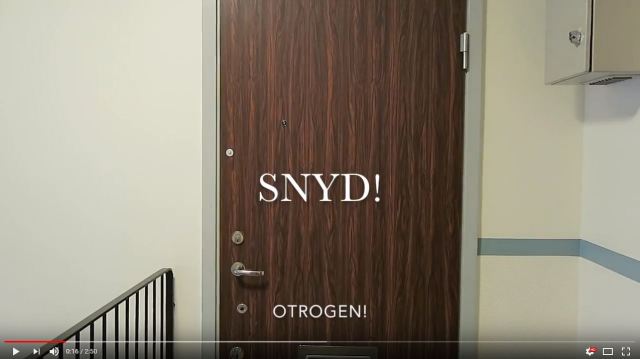
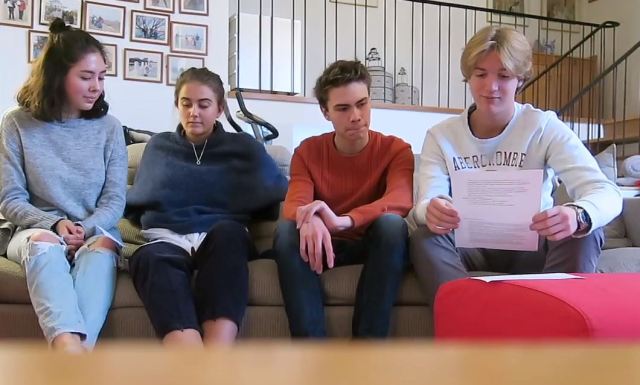

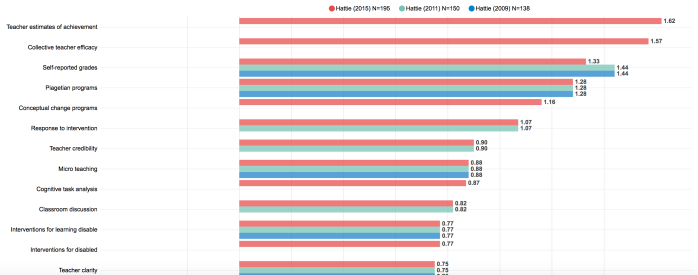

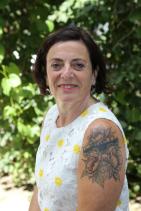 What do you students learn in this type of assignment? French, yes, but also how to manage creative processes and how to work together.
What do you students learn in this type of assignment? French, yes, but also how to manage creative processes and how to work together.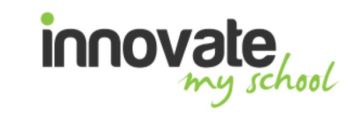

 Read a true example from our Geometry class.
Read a true example from our Geometry class. 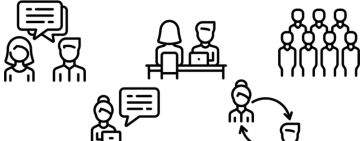
 Guest blogger: Maria Axelsson and Anja Vikingson
Guest blogger: Maria Axelsson and Anja Vikingson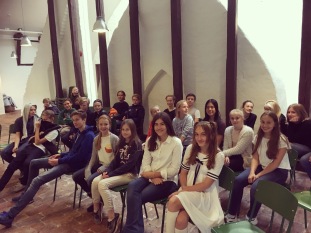 Secondly, we are changing our library system – a big step towards easier navigation for our students and for keeping track of all our books that go between schools. This has meant a lot of hours cataloging and making everything work, and we are just now starting to see the benefits of the change as the students find their way around the libraries.
Secondly, we are changing our library system – a big step towards easier navigation for our students and for keeping track of all our books that go between schools. This has meant a lot of hours cataloging and making everything work, and we are just now starting to see the benefits of the change as the students find their way around the libraries.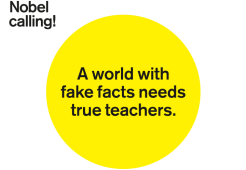 informationskompetenser (Media and information literacy) are some of the events we have or going to attend. To share our knowledge with our teachers we also held a workshop at our annual VR Workshops – So much fun! Teachers participated in discussions, speed dating and tried out new lesson plans on media literacy. This also resulted in some new resources on our web page focusing on MIL for teachers.
informationskompetenser (Media and information literacy) are some of the events we have or going to attend. To share our knowledge with our teachers we also held a workshop at our annual VR Workshops – So much fun! Teachers participated in discussions, speed dating and tried out new lesson plans on media literacy. This also resulted in some new resources on our web page focusing on MIL for teachers.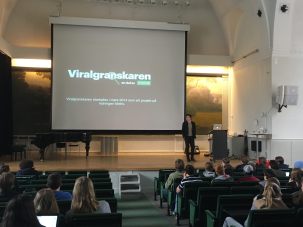 Meanwhile, we have been busy with our regular activities;
Meanwhile, we have been busy with our regular activities; 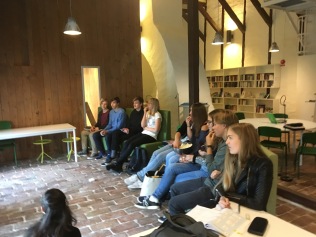


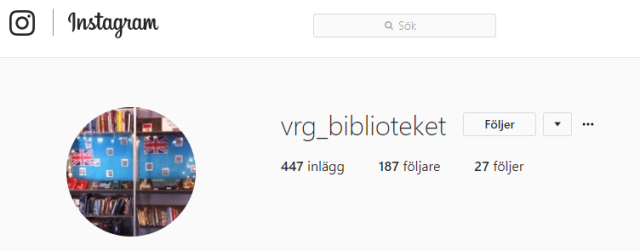
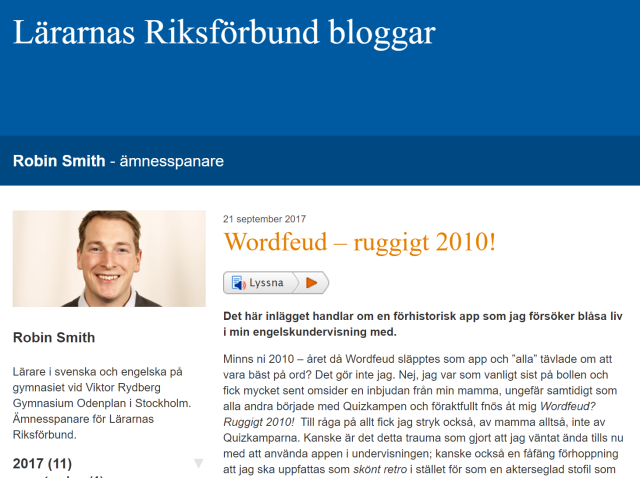


 This year, we will focus on Physics 2. For those who do not know, I can explain that the project, which is a collaboration between the physics teachers at VRG Odenplan and
This year, we will focus on Physics 2. For those who do not know, I can explain that the project, which is a collaboration between the physics teachers at VRG Odenplan and 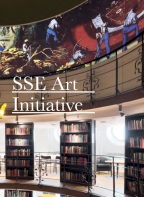
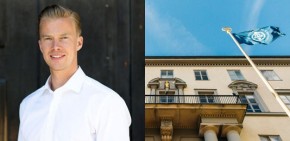
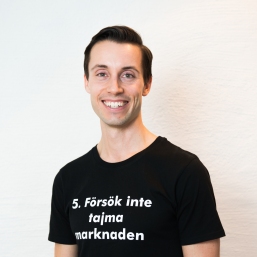
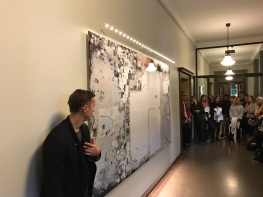 Although it is extremely appropriate for seniors to visit colleges to better understand the expectations of the next step, (Always fun to visit, it didn’t take long before they ran into many former VRG students!) this kick-off was far more than that.
Although it is extremely appropriate for seniors to visit colleges to better understand the expectations of the next step, (Always fun to visit, it didn’t take long before they ran into many former VRG students!) this kick-off was far more than that.